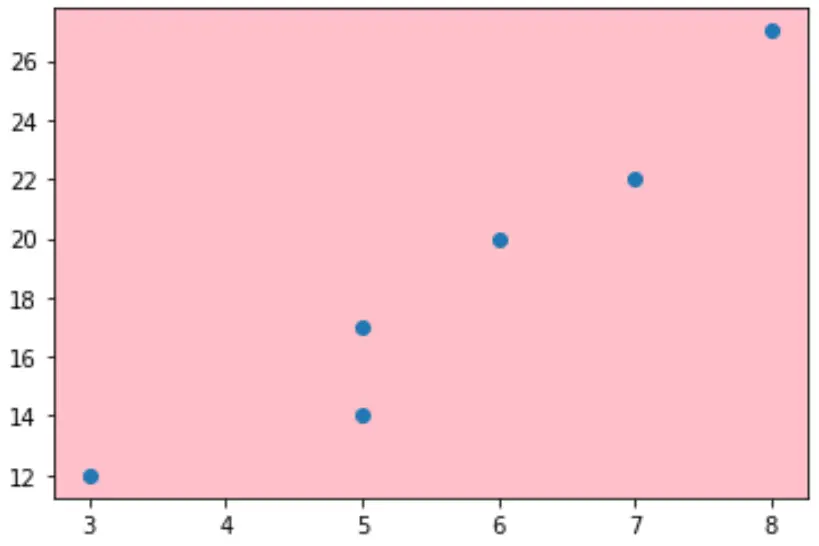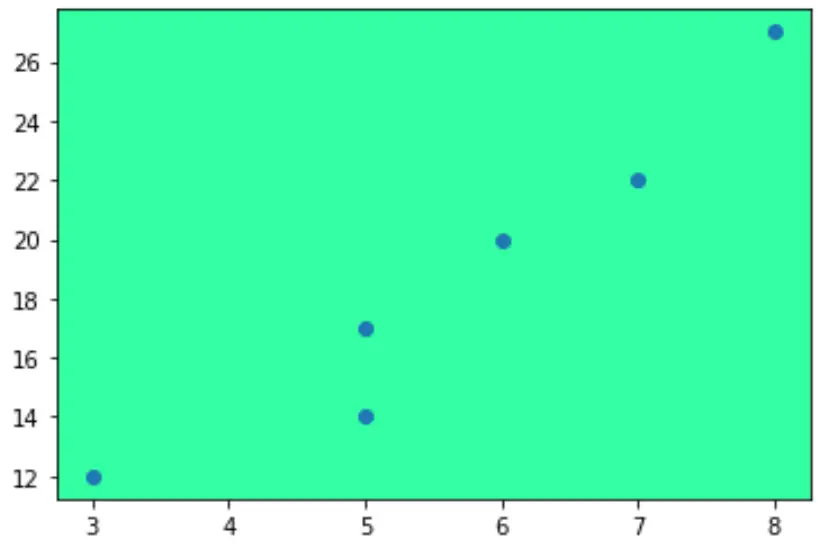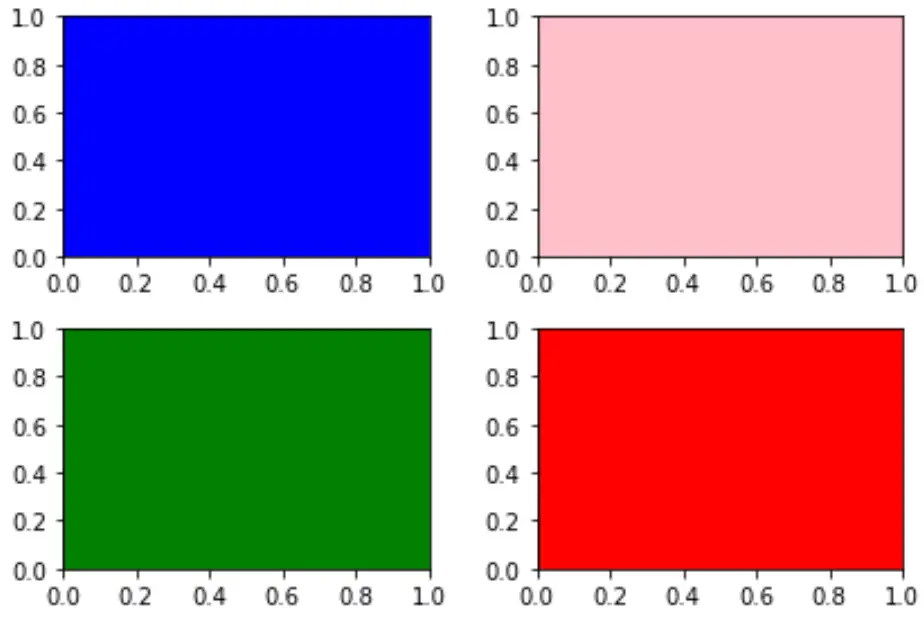วิธีเปลี่ยนสีพื้นหลังใน matplotlib (พร้อมตัวอย่าง)
วิธีที่ง่ายที่สุดในการเปลี่ยนสีพื้นหลังของพล็อตใน Matplotlib คือการใช้อาร์กิวเมนต์ set_facecolor()
หากคุณกำหนดตัวเลขและแกนใน Matplotlib โดยใช้ไวยากรณ์ต่อไปนี้:
fig, ax = plt. subplots ()
จากนั้นคุณสามารถใช้ไวยากรณ์ต่อไปนี้เพื่อกำหนดสีพื้นหลังของโครงเรื่อง:
ax. set_facecolor (' pink ')
บทช่วยสอนนี้มีตัวอย่างการใช้งานฟังก์ชันนี้ในทางปฏิบัติหลายตัวอย่าง
ตัวอย่างที่ 1: ตั้งค่าสีพื้นหลังโดยใช้ชื่อสี
รหัสต่อไปนี้แสดงวิธีการตั้งค่าสีพื้นหลังของพล็อต Matplotlib โดยใช้ชื่อของสี:
import matplotlib. pyplot as plt #define plot figure and axis fig, ax = plt. subplots () #define two arrays for plotting A = [3, 5, 5, 6, 7, 8] B = [12, 14, 17, 20, 22, 27] #create scatterplot and specify background color to be pink ax. scatter (A, B) ax. set_facecolor (' pink ') #display scatterplot plt. show ()

ตัวอย่างที่ 2: ตั้งค่าสีพื้นหลังโดยใช้รหัสสีฐานสิบหก
รหัสต่อไปนี้แสดงวิธีการตั้งค่าสีพื้นหลังของพล็อต Matplotlib โดยใช้รหัสสีฐานสิบหก:
import matplotlib. pyplot as plt #define plot figure and axis fig, ax = plt. subplots () #define two arrays for plotting A = [3, 5, 5, 6, 7, 8] B = [12, 14, 17, 20, 22, 27] #create scatterplot and specify background color to be pink ax. scatter (A, B) ax. set_facecolor (' #33FFA2 ') #display scatterplot plt. show ()

ตัวอย่างที่ 3: ตั้งค่าสีพื้นหลังสำหรับแผนย่อยเฉพาะ
บางครั้งคุณจะมีแปลง Matplotlib หลายแปลง ในกรณีนี้ คุณสามารถใช้โค้ดต่อไปนี้เพื่อระบุสีพื้นหลังของพล็อตเดียว:
import matplotlib. pyplot as plt #define subplots fig, ax = plt. subplots (2, 2) fig. tight_layout () #define background color to use for each subplot ax[0,0]. set_facecolor (' blue ') ax[0,1]. set_facecolor (' pink ') ax[1,0]. set_facecolor (' green ') ax[1,1]. set_facecolor (' red ') #display subplots plt. show ()

ที่เกี่ยวข้อง: วิธีปรับระยะห่างระหว่างแผนย่อย Matplotlib